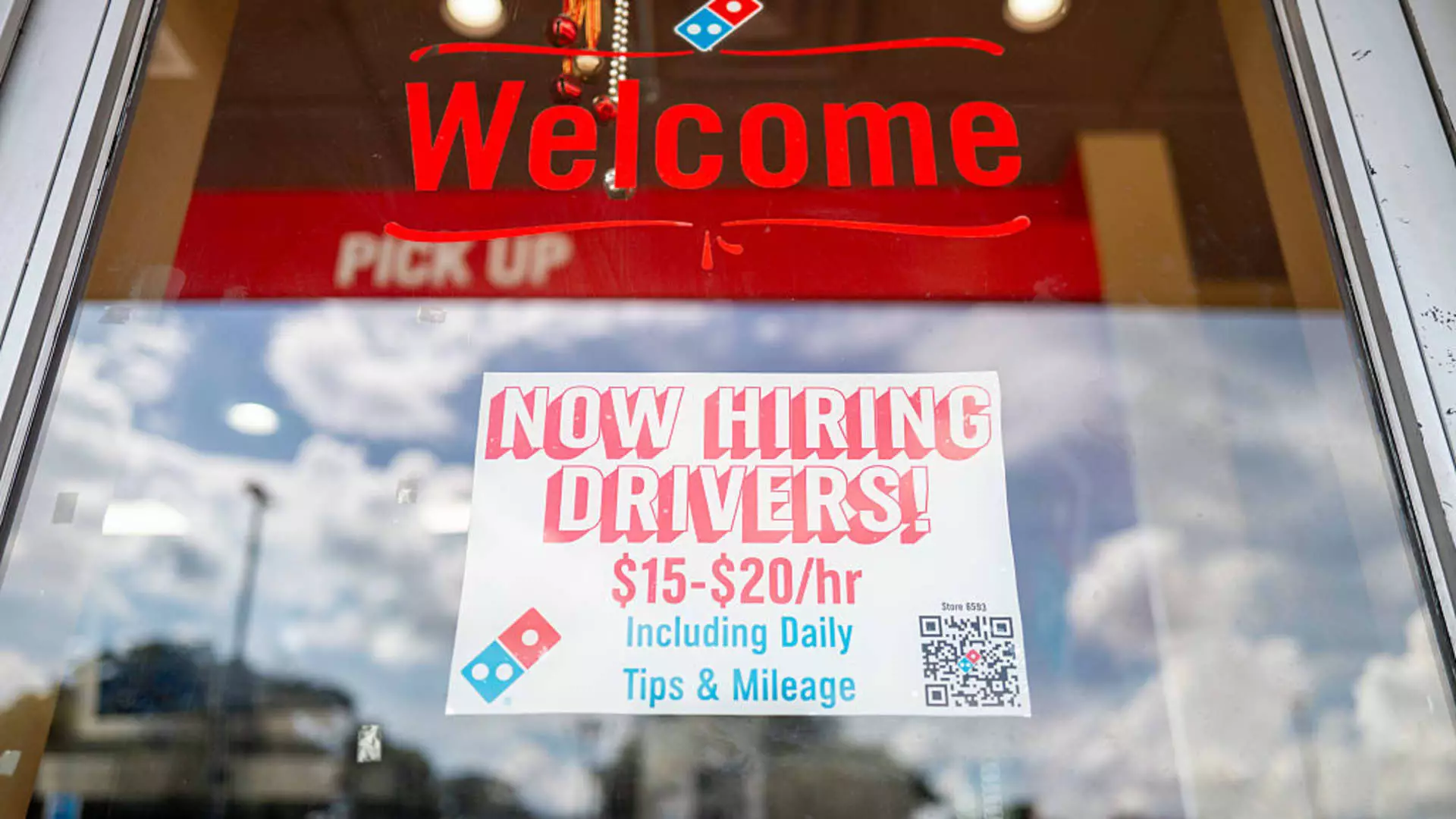The U.S. labor market, long regarded as a pillar of economic resilience, is now teetering on the brink of instability, and the culprits are disturbingly rooted in political interference and misguided governance. While many economists dismiss recent developments as temporary fluctuations, a closer look reveals a disturbing pattern: government-led austerity, fueled by ideological pursuits and partisan agendas, is undermining the very foundation of economic recovery. Federal employees, who once stood as a symbol of stability and national service, are now caught in an unprecedented wave of layoffs orchestrated under the guise of efficiency, but in reality, it signals a deliberate attempt to weaken public institutions and undermine worker confidence.
This crisis isn’t just about numbers; it’s about the societal fabric fraying at its edges. The decision by certain policymakers, influenced by short-term political gains and austerity rhetoric, to drastically cut federal staff—totaling over 280,000 positions—goes beyond mere budget trimming. It’s a calculated move to destabilize a crucial sector of the economy, reducing consumer confidence, constraining public service capacity, and ultimately, choking off the inclusive growth needed for a healthy labor market. Worse still, it’s happening at a time when private sector hiring is already faltering, signaling that the country’s economic engine is sputtering under the weight of ideological rigidity and neglect.
The False Narrative of Market Strength
Despite the prevailing narrative that the labor market remains fundamentally strong, the reality paints a different picture. Recent data—shunned or downplayed by many mainstream analysts—points toward a slowdown that could have long-lasting repercussions. Private sector employment contracted unexpectedly in June, losing 33,000 jobs according to ADP, a stark contrast to the optimistic forecasts of economists. Meanwhile, the number of federal job applications soared by 150%, indicating a lack of faith in future opportunities within the government sector. These sobering statistics should serve as a wake-up call: the market’s recovery isn’t as organic or resilient as it appears, especially when government actions are actively shrinking the very jobs that anchor economic stability.
The Biden administration’s emphasis on austerity in the federal workforce under a guise of efficiency and fiscal responsibility is largely to blame. Policies that reduce core government functions are not only shortsighted—they are destructive. When the government shrinks, it weakens its ability to provide essential services, boost economic demand, and serve as an economic stabilizer during turbulent times. The message being sent is clear: public sector jobs are expendable, and this sentiment spills over into the broader economy, discouraging investment, dampening consumer spending, and fostering pessimism rather than hope.
White-Collar Jobs and a Declining Opportunity Horizon
The impacts extend beyond the public sector. Data from the Indeed Hiring Lab reveal a worrying trend: applications for knowledge work—like data analytics, marketing, and software development—have surged by 150%, reflective of a growing sense of instability and desperation among workers. Although there was a modest 4% dip in applications in May, the overall picture remains bleak. It showcases an economy where demand for high-skilled, white-collar jobs is retreating rapidly, constrained by policies that inhibit growth and innovation.
This contraction is not coincidental; it is emblematic of a broader shift driven by political motives. Higher interest rates, perpetuated by the Federal Reserve’s reluctance to loosen monetary policy amid persistent inflation, compound the problem. Tech companies, which rely heavily on borrowing for expansion, are forced to hold back on hiring, further strangling innovation and long-term growth prospects. It’s a vicious cycle: policy choices made in political chambers are diminishing the capacity of the economy to rebound, particularly in sectors that could spearhead recovery through innovation and productivity enhancement.
A Systemic Weakening of Economic Vitality
The broader implications of these shifts are ominous. Historically, the U.S. labor market has demonstrated remarkable resilience, rebounding swiftly from crises. Today, however, the signs of strain are mounting, driven by political decisions that prioritize austerity over strategic investment in human capital. National efforts to cut federal jobs create ripple effects that are felt across industries, especially in knowledge-based sectors vital for future growth.
Furthermore, these policies are eroding the trust and morale of workers—both within government and beyond. When workers see their colleagues laid off en masse, and when job prospects remain stagnant or diminish, it cultivates an environment of uncertainty and insecurity. This climate discourages not only immediate employment but also long-term career planning, especially among young professionals who seek stability and meaningful growth opportunities.
The political climate, with its focus on reducing government size and resisting necessary investments in workforce development, is fundamentally undermining the American Dream of upward mobility and economic fairness. Instead of fostering an inclusive economy where every worker has a fair shot at success, current policies perpetuate inequality by shrinking job opportunities in sectors that historically provided pathways to prosperity.
Challenges and Opportunities Ahead
It’s undeniable that the labor market is in a state of flux, but whether that change will turn into a full-blown crisis depends largely on political will and policy choices moving forward. The current trajectory, characterized by deep cuts to federal employment and restrictive monetary policy, threatens to suppress economic growth for years to come. To reverse this, a shift toward a more balanced approach—where investment in public services and strategic support for innovation is prioritized—must happen.
However, with political polarization reaching new heights, meaningful change seems elusive. The challenge lies in inspiring a center-leaning liberal vision that recognizes the importance of a strong public sector as a safeguard against economic volatility and inequality. Only then can the nation restore faith in its institutions, rebuild the workforce, and ensure that economic recovery benefits all, not just the privileged few. The current road leads to stagnation—a perilous path that risks turning economic weakness into systemic decline.


Leave a Reply